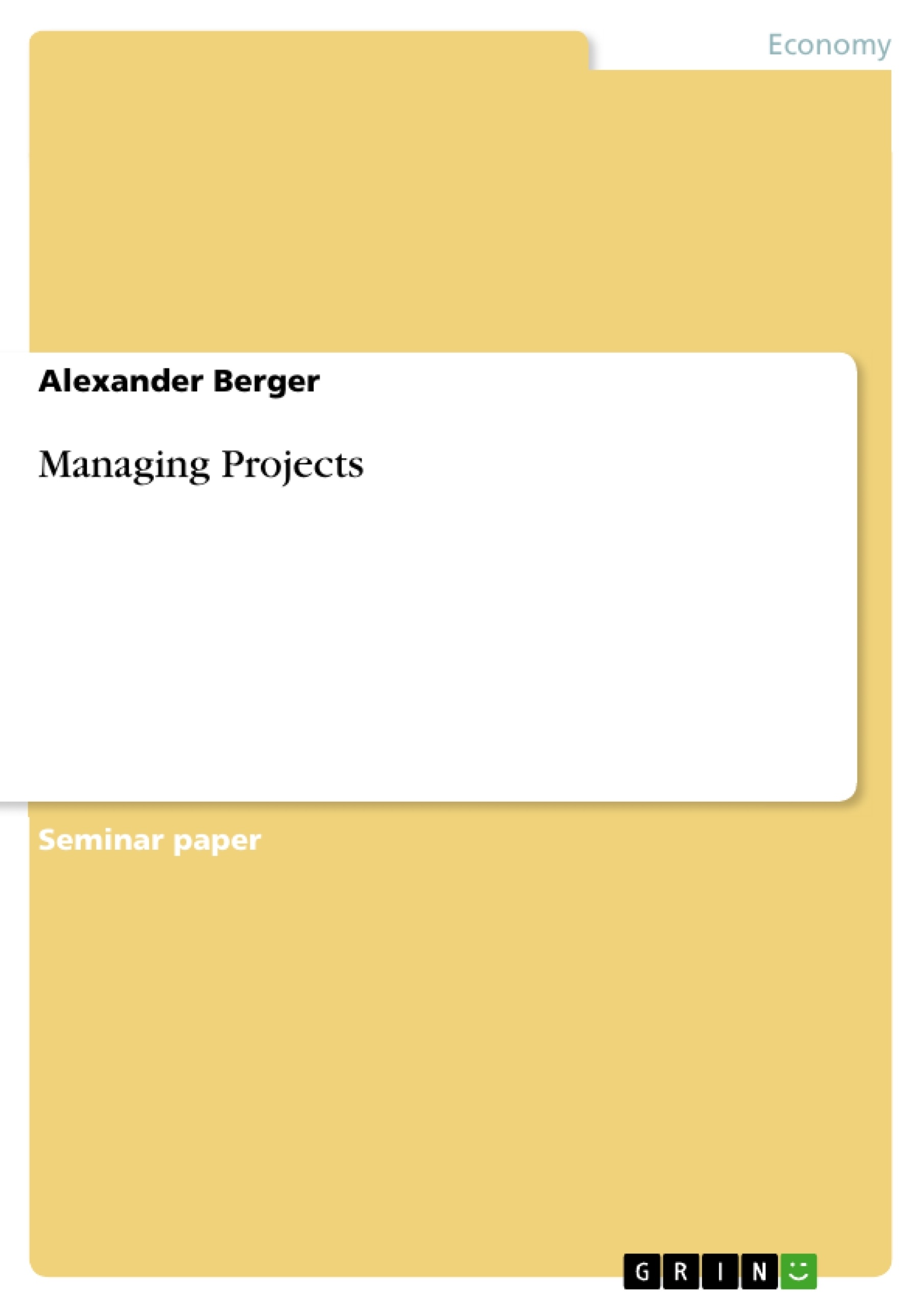Project Management is all about planning, organizing, and managing the resources in order to have a successful completion of specific project goals and objectives. Every project is unique and the conditions affecting planning and implementation are different every time. The starting and a finishing date are clearly determined before
the project is executed. This report describes the important figures who take place in the project such as theproject manager (PM) and his team as well as describing project tools and steps which are necessary to take to execute the project properly. The PM is responsible for the overall success of the project. He has the responsibility of the planning, execution, and closing of the project. He sets up a team which he will lead throughout the project. The team consists of experts who fulfill the requirements to execute the project successfully. Furthermore planning is an important part which relates to the use of schedules such as a Work Breakdown Structure to plan and subsequently report progress within the project environment. Referring to this, the feasibility study
will show if a project is technical and financial feasible and has to be done before a project starts. Moreover cost is one of the three pillars supporting project success or failure, the other two being schedule and performance. A project that goes “over budget” will most common not achieve the goals of the project because stakeholder run simply out of money. Therefore it is very important that cost are calculated and controlled during the project which is a part of the PM´s duties. During the project duration, many risks and problems occur, which could influence the quality and the
cost of the project in a positive or negative way. Therefore it is important to determine all possible risks as early as possible to avoid future conflicts. At the end of the project the PM has to develop a so called close-out plan which finalizes all activities
across of the project management process to formally close the project.
Inhaltsverzeichnis (Table of Contents)
- Task 1
- Exercise 1
- Exercise 2
- Exercise 3
- Exercise 4
- Exercise 5
- Exercise 6
- Task 2
- Executive Summary
- Introduction
- Findings
- Project Manager
- The project team
- Planning and monitoring
- Project Life cycle
- Objectives
- Feasibility Study
- Stakeholder analysis
- Work Breakdown Structure
- Cost Management
- Resource Planning
- Estimating Costs
- Cost Budgeting
- Cost Control
- Project Risks
- Closing the Project
- Project planning and scheduling
- Critical Path Method (CPM) analysis
- Resource allocation and management
- Cost estimation and control
- Project risk assessment and mitigation
- Task 1: This section explores fundamental project management concepts through practical exercises. It introduces the critical path method (CPM) for project scheduling and examines techniques for calculating activity durations and float times. Exercise 1, found in the appendix, provides a concrete example of CPM analysis.
- Task 2: This chapter delves into the broader aspects of project management, outlining key phases and considerations in the project lifecycle. It examines project planning and monitoring, including defining project objectives, conducting feasibility studies, and developing stakeholder analysis. The chapter also explores cost management techniques, including resource planning, cost estimation, budgeting, and control. Furthermore, it addresses the crucial aspect of project risks, highlighting their identification, assessment, and mitigation strategies.
Zielsetzung und Themenschwerpunkte (Objectives and Key Themes)
This document provides a detailed analysis of project management principles and practices, drawing upon various theoretical frameworks and real-world examples.
Zusammenfassung der Kapitel (Chapter Summaries)
Schlüsselwörter (Keywords)
This report focuses on key project management concepts, including Critical Path Method (CPM), project planning, project scheduling, feasibility study, stakeholder analysis, resource allocation, cost management, and project risks.
- Quote paper
- Alexander Berger (Author), 2009, Managing Projects, Munich, GRIN Verlag, https://www.grin.com/document/173678



